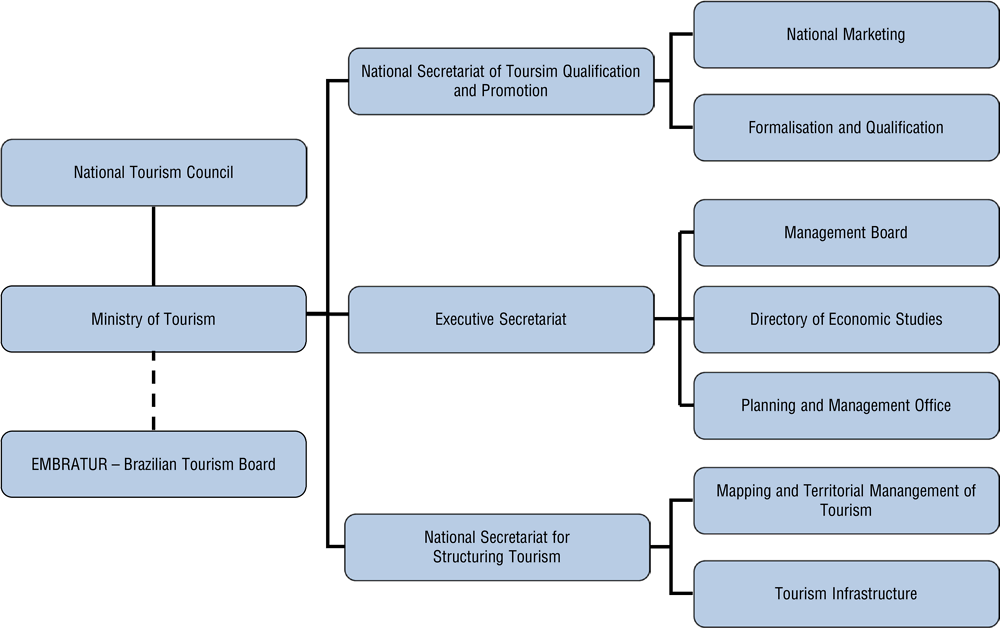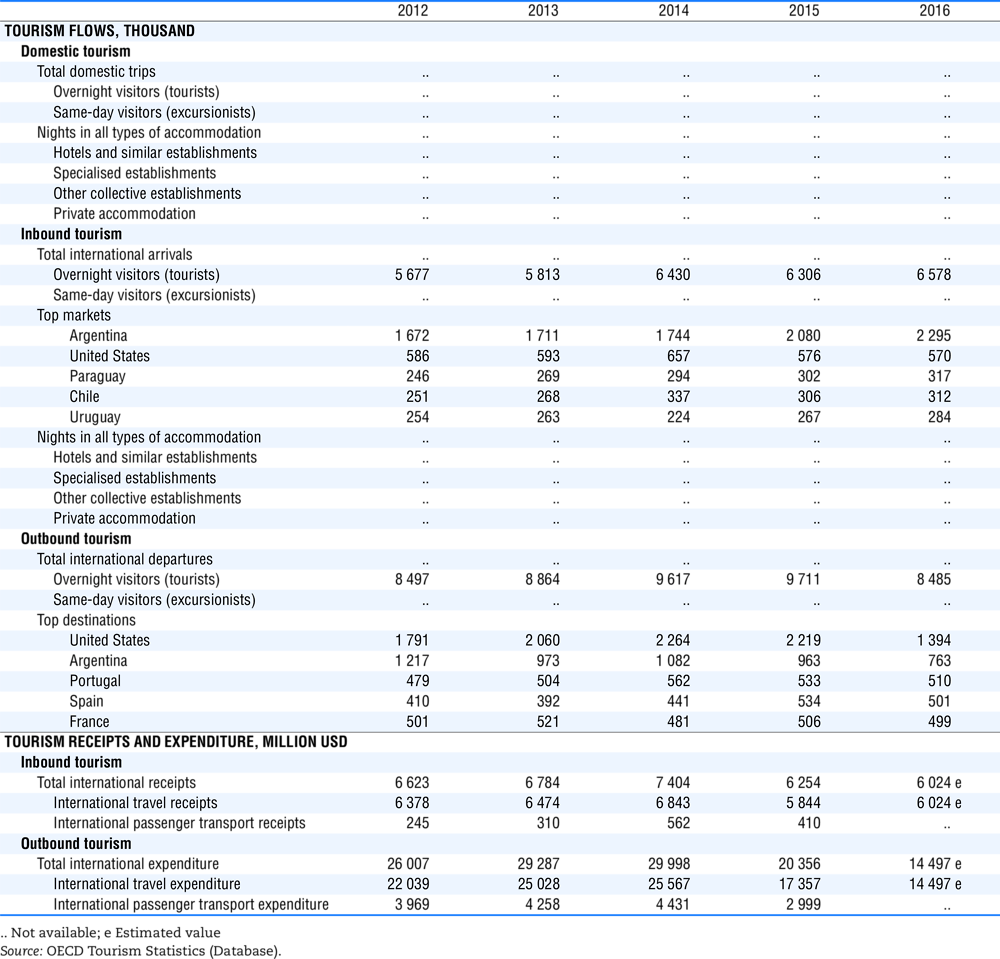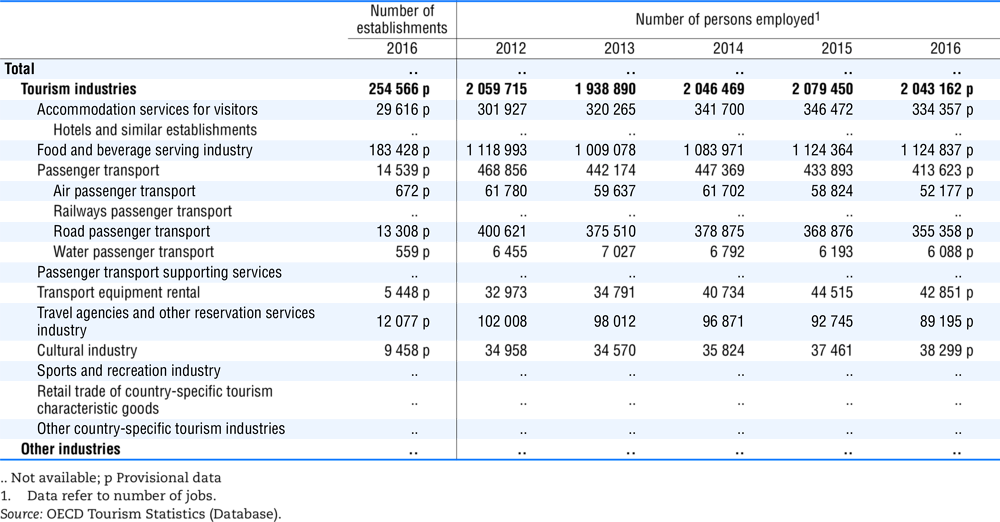Brazil
Tourism in the economy
Tourism in Brazil accounts directly for 3.7% of GDP, rising to 9.6% if indirect effects are also included. The sector supported in excess of 2 million jobs in 2016 (down 1.7% from 2015), accounting for 2.4% of total employment.
In 2016, international tourist arrivals reached a record of 6.6 million, representing an increase of 4.3% on the previous year, and generating total revenue of USD 6 billion (up 3.7%). Argentina, was by far the largest source market with 2.3 million visitors (34.9% of the total), followed by the United States (8.7%), Paraguay (4.8%), Chile (4.7%) and Uruguay (4.3%). The five primary source markets demonstrated varying levels growth from 2015, apart from the United States, which experienced a very slight contraction of approximately 1%.
With over 206 million trips in 2015, the domestic market has high potential for growth. 90% of Brazilians will choose domestic destinations for their next vacation, including carnival and summer breaks. The main destinations are the Northeast, followed by the Southeast and South regions.
Tourism governance and funding
Since 2003 the Ministry of Tourism (MTur) has overseen a process of decentralisation towards a shared management structure for tourism built upon a network of engagement and activity with public, private and third sector actors, throughout the country.
This model consists of a national strategic core including:
-
The Ministry of Tourism,
-
The National Council of Tourism (CNT), which is responsible for strategic direction and bringing together the various actors,
-
The National Forum of State Secretaries and Directors of Tourism (FORNATUR), and
-
A decentralised management network composed of Regional Governance Bodies.
The State Tourism Boards and Councils, created in the 27 Federation Units, are legally independent management bodies, promoting efficient communication in the different tourist regions of the country. They also serve as important instruments to support activities that benefit tourism, providing continuity over time.
Reflecting the high priority given to tourism by the Federal Government, the 2017 general budget for tourism in Brazil was BRL 672 million (down 9.7% on 2016). In additional to the Federal Government, funding is received from other sources, including national and international aircraft boarding fees.

Source: OECD, adapted from the Ministry of Tourism, 2018.
Tourism policies and programmes
The National Tourism Plan 2013-16 continues to be a reference point for public sector tourism policy. Its focus is on the development of tourism that is economically sustainable, environmentally balanced and socially inclusive.
Despite efforts to promote sustainable growth in the tourism sector, Brazil is still far from achieving its goals of social equity and respect for the environment. One of the biggest challenges is to raise awareness in the private sector about the importance of sustainable development as a way to protect the environment, improve the economy and provide accessibility for all.
In April 2017 the Ministry of Tourism launched “Brazil + Tourism”, a package of measures to strengthen the industry in Brazil. This initiative aims to:
-
Bring technical solutions to historical bottlenecks,
-
Increase the number of domestic and foreign tourists,
-
Improve domestic destinations,
-
Provide regional development, and
-
Generate employment and income.
The primary strategic initiatives to boost tourism in Brazil are:
-
Issuing Electronic Visas. The MTur has proposed to the Ministry of Foreign Relations that the use of electronic visas be applied to certain strategic countries, thereby making the process, which is accessible online, much easier, quicker and less bureaucratic.
-
Expanding air connectivity. Amendment of the Brazilian Aeronautical Code will raise the limit on foreign investment in the capital of Brazilian airlines to 100%. The objective is to increase competitiveness and the number of flights and tourists travelling within the country, in addition to extending the regional air network to facilitate the spread of national and international visitors.
-
Modernising the Brazilian Tourist Promotion Agency, EMBRATUR. Changes will enable the Agency to: act more competitively in the international tourism marketplace; receive private resources for the development of projects of mutual interest, with reduced bureaucracy; modernise its management; and maintain a structure of offices and personnel abroad.
-
Modernising the General Tourism Law (LGT). 118 proposals for changes in General Tourism Law have been submitted to the National Congress. The goal is to adapt the Brazilian tourism legislation to the current dynamics of tourist activity, reducing bureaucracy and improving integration with the private sector.
-
Achieving better use of certain areas of the Union. The Ministry of Tourism will strengthen tourism management, regulation and concessions in locations with tourism development potential.
-
Updating the Brazilian Tourism Map. A process, undertaken every two years, to improve the organisation in the municipalities and regions and their orientation to tourism, linked to the receipt of federal resources. In the last update in 2016, the number of municipalities was rationalised to 2 175 in 291 tourist regions (down from 3 345 in 2013).
-
Strengthening State Tourism Agencies. This involves the transfer of BRL 5.4 million for State Tourism bodies, allocated to reflect the restructure of tourist regions of the Brazilian Tourism Map. The measure will allocate resources to integrated development plans for sustainable tourism and marketing, amongst other activities.
-
Intensifying surveillance of tourist transport on Brazil’s highways, through technical co-operation with the National Agency of Terrestrial Transportation (ANTT).
-
Strengthening professional qualifications. Programs at different levels have been established to address the need to improve the availability of skilled labour and quality of service. For example, as part of a package of measures called “Brazil + Tourism” to boost the development of tourism in the country, an important element was a programme to provide practical skills training for young people and adults to improve the quality of service for tourists (Box 1.21).


